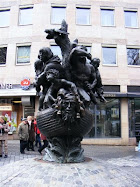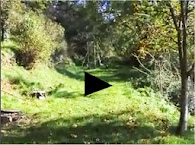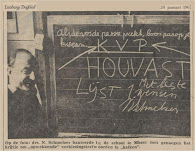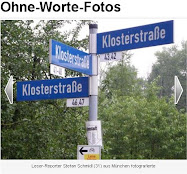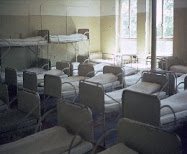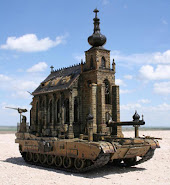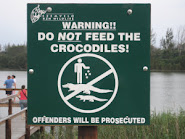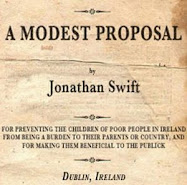zaterdag, november 29, 2014
vrijdag, november 28, 2014
Preventieproject ter bestrijding van misbruik verhuist naar Rome
BRUSSEL (KerkNet/RadVat) – De proefperiode van het e-learningproject 'Preventie van seksueel misbruik' van het Centrum voor Kinderbescherming is voltooid. Vanaf 1 januari verhuist het centrum naar Rome. Dat hebben de Duitse kardinaal Reinhard Marx, de aartsbisschop van München en Freising, en pater Hans Zollner, de voorzitter van het centrum en het Instituut voor Psychologie van de Gregoriaanse Universiteit, bekendgemaakt.
 De jezuïet Hans Zollner is bijzonder tevreden met het geleverde werk: "De eindbalans is zeer positief. Wij hebben een e-learningprogramma, een via internet ondersteund leerplatform, gestart in samenwerking met het universitair ziekenhuis van Ulm en met de steun van het aartsbisdom München en Freising. Het werd uitgeprobeerd met deelnemers uit tien landen en elf projectpartners. De respons was zeer positief. Daarom wordt dit project voortgezet. Vanaf 1 januari verhuizen wij naar de Gregoriaanse Universiteit in Rome, waar het project wordt verdiept."
De jezuïet Hans Zollner is bijzonder tevreden met het geleverde werk: "De eindbalans is zeer positief. Wij hebben een e-learningprogramma, een via internet ondersteund leerplatform, gestart in samenwerking met het universitair ziekenhuis van Ulm en met de steun van het aartsbisdom München en Freising. Het werd uitgeprobeerd met deelnemers uit tien landen en elf projectpartners. De respons was zeer positief. Daarom wordt dit project voortgezet. Vanaf 1 januari verhuizen wij naar de Gregoriaanse Universiteit in Rome, waar het project wordt verdiept."De leiding van het centrum in Rome is in handen van de Vlaamse theologe Karlijn Demasure.
 Het project werd begin 2012 gestart, met het oog op de bewustmaking en begeleiding van competente priesters, diakens, pastorale medewerkers en andere pastorale verantwoordelijken wereldwijd. Het streefde er vooral naar om deze mensen beter te bewapenen voor de bestrijding van seksueel misbruik en geweld. Volgens pater Zollner werd de cursisten onder meer vertrouwd gemaakt met de herkenning van de symptomen van misbruik, de begeleiding van slachtoffers, evenals manieren om misbruik te bestrijden en ermee om te gaan.
Het project werd begin 2012 gestart, met het oog op de bewustmaking en begeleiding van competente priesters, diakens, pastorale medewerkers en andere pastorale verantwoordelijken wereldwijd. Het streefde er vooral naar om deze mensen beter te bewapenen voor de bestrijding van seksueel misbruik en geweld. Volgens pater Zollner werd de cursisten onder meer vertrouwd gemaakt met de herkenning van de symptomen van misbruik, de begeleiding van slachtoffers, evenals manieren om misbruik te bestrijden en ermee om te gaan. Volgens kardinaal Reinhard Marx heeft zijn aartsbisdom het pilootproject in zijn aanvangsfase voor een bedrag van 651.000 euro gefinancierd. Ook de komende vijf jaar blijft het aartsbisdom 500.000 euro bijdragen om de werking mogelijk te maken. Pater Zollner vult nog aan dat het project tot op heden heel gespecialiseerd en academisch was. Bij de verhuis naar Rome wordt ernaar gestreefd om de drempel ook voor mensen met minder competenties te verlagen, om het project toegankelijker te maken.
 |
| Makmud Eshonkulov |
 |
| Victor Ndula |
donderdag, november 27, 2014
Codornizes The True Story of Thanksgiving
A new historical account was recently discovered.
By Zachary Schrieber
It is recorded here.
Sir Moses splashed his staff into the eastern side of the Atlantic Ocean. After years of religious persecution, he and the Israelites would finally be free; an entire New World awaited them. The oceans parted and the group stepped onto the dry land. 40 years later, they arrived in America – at Plymouth.
But the Israelite pilgrims were unfamiliar with the agriculture of this new land and struggled to build a stockpile of food to last through the winter. Luckily, one of the Native American tribes offered assistance. They provided a type of cornmeal, called manna, that to it could be added flavorings of any kind.
As thanks, the following year the pilgrims held a simple feast over Turkey, bread and vegetables to celebrate the bountiful harvest. Over time, other foods were added to the meal to commemorate different struggles and successes the pilgrims faced in the early days of their settlements: collard greens for the lush pastures; mashed potatoes for the snowy winters; and pecan pie because, well, it’s just so darn good. A man named Hillel, a prominent member of the community, would make a sandwich with the turkey and other foods served at the meals. Later, due to a publisher’s typo when recounting this story, it became customary to stuff the turkey itself with vegetables and bread to commemorate his tradition. Many also now drink four glasses of wine over the course of dinner, and perhaps more – depending on company.
To this day, many Israelite descendants still celebrate the miracles of that time by dressing like the pilgrims all-year-round.
By Zachary Schrieber
It is recorded here.
Sir Moses splashed his staff into the eastern side of the Atlantic Ocean. After years of religious persecution, he and the Israelites would finally be free; an entire New World awaited them. The oceans parted and the group stepped onto the dry land. 40 years later, they arrived in America – at Plymouth.
But the Israelite pilgrims were unfamiliar with the agriculture of this new land and struggled to build a stockpile of food to last through the winter. Luckily, one of the Native American tribes offered assistance. They provided a type of cornmeal, called manna, that to it could be added flavorings of any kind.
As thanks, the following year the pilgrims held a simple feast over Turkey, bread and vegetables to celebrate the bountiful harvest. Over time, other foods were added to the meal to commemorate different struggles and successes the pilgrims faced in the early days of their settlements: collard greens for the lush pastures; mashed potatoes for the snowy winters; and pecan pie because, well, it’s just so darn good. A man named Hillel, a prominent member of the community, would make a sandwich with the turkey and other foods served at the meals. Later, due to a publisher’s typo when recounting this story, it became customary to stuff the turkey itself with vegetables and bread to commemorate his tradition. Many also now drink four glasses of wine over the course of dinner, and perhaps more – depending on company.
To this day, many Israelite descendants still celebrate the miracles of that time by dressing like the pilgrims all-year-round.
Happy Halloween
¨Racism is a disease and the cure for it is education.¨ Colonialism Causes Diabetes, and other things I learned at the Indigenous Health Conference; de wapens van de heer
 |
| life at the ocean waves |
According to new research presented at the first Indigenous Health Conference last week, colonialism causes diabetes.
I know, I know, I'm not supposed to talk about causality when it comes to scientific research. But it's pretty hard not to think that way when confronted with Dr. Rick Oster & company's research. Dr. Oster has shown that First Nations communities with a higher proportion of members speaking their native language have lower rates of diabetes.
We know that a key plank of the residential school system was to destroy Aboriginal languages. This was a key plank in Canada's colonial system. So those communities that, for whatever reason, were able to retain their languages have been somewhat inoculated against diabetes.
Indigenous people across Turtle Island are working diligently to recover from colonialism. We can see this in initiatives to recover languages and go back to traditional foods -- both of which show promise in fighting diabetes and other diseases. But one thing that conference presenters made clear is that colonialism is not something that happened in the past. Colonialism is alive and well throughout Canadian society, and the health care system is no exception. In fact, the health care system broadly speaking is a principal way that Canada continues to colonize Indigenous people.
As Natan Obed, Director of Social and Cultural Development at Nunavut Tunngavik Incorporated, discussed, one of the ways the health care system reproduces colonialism is through health research. Too often medical researchers treat Indigenous people as objects to be studied, rather than partners in their research. This attitude harkens back to the food experiments done on children incarcerated in residential schools. And while university ethics submissions now include a line for Aboriginal partners, too often health researchers treat such partnerships as a hoop to jump through rather than an integral part of the research process.
The legacy of residential schools also speaks to the importance of incorporating traditional healing into Indigenous health care practices. Keynote speaker Justice Murray Sinclair, head of the Truth and Reconciliation Commission, noted that for many Aboriginal people in this country, when they step inside a hospital or a doctor's office, they feel echoes of their time in residential school. After all, the institutions have very similar authority structures. This leads many residential school survivors to deeply distrust the medical establishment.
Even when someone suffering from mental or physical difficulties does decide to enter into the Western medical system, they often visit a traditional healer or elder as well. However, this leaves both the physician and the traditional healer in the dark as to what the other is doing, and may complicate care for the patient. A number of speakers at the conference pointed to this lack of dialogue as posing a problem for the health of Indigenous people.
The work, therefore, is in decolonizing the health care system. For most Indigenous people, this means self-determination -- the freedom to choose how to implement health care systems, governance, and what treatments an individual patient may choose. Aboriginal Affairs and Northern Development Canada (AANDC) and Health Canada both take great pains to cast their programming as enabling First Nations to come to self-determination over their health services. But as Dr. Angela Mashford-Pringle made clear, there is a substantial and qualitative difference between the self-administration being peddled by the federal government, and the self-determination that Indigenous peoples are calling for.
AANDC and Health Canada simply expect First Nations to reproduce the health system found in mainstream Canada, but with Indigenous people administering it. So long as AANDC and Health Canada control the purse strings, there is no room for First Nations to take control of their health in any meaningful way. Doctors and traditional healers will remain at odds; communities will be expected to suffer through the imposition of a cookie cutter approach to their well being; and chronic diseases associated with colonialism -- from diabetes to depression to substance abuse -- will continue to plague Indigenous people.
These problems are massive, and can be daunting. As Justice Sinclair said in his opening remarks, Canadian colonialism won't be resolved within our lifetime. But there are many glimmers of hope out there. Incorporating traditional healing into treatment for substance abuse is having positive impact for patients, and moving addiction treatment towards a holistic approach. Indigenous people are reclaiming traditional foods as a way to reconnect with their cultures -- and prevent diabetes. And British Columbia is the first province to create a First Nations Health Authority, which aims to improve First Nations health outcomes with a culturally relevant approach.
And now health care practitioners have tools at their disposal to better serve their Indigenous clients. Indigenous Cultural Competency Training is an online, live facilitated course designed to enhance self-awareness among health care workers, and build towards a culturally safe health care system. As Vanessa Ambtman-Smith and Guy Hagar showed, their program is working to break down the preconceptions and prejudices -- the racism -- that many Indigenous people face in health care settings. This training won't eliminate colonialism from healthcare on its own -- but it's an encouraging start, and enables non-Aboriginal people to learn more about how to change their own practices to stop colonialism from continuing.
Oh uh enne soepopscheplepels in de nek van een kind , heer Deetman, zijn géén pedagogische tik maar de wapens van een door godsdienstwaanzin verblindde engel des heren die niet weet dat een mond zich aan de andere kant van de wervels bevind waarvoor goden op blote knietjes bedankt dienen te worden en heet dwangvoeding
!
Dát doe je alleen bij blauwe aardappels, mits je ze in opdracht zelf hebt bereid en ze voorafgaan aan niet vanzelf uit de kast lopende groenuitgeslagen blauwe toetjes op een bedje van pelikaandons
dinsdag, november 25, 2014
“I will not have my daughter treated with poison,”
Heelal:
Hoe verder men keek
hoe groter het leek
Maar het bleek alras
hoe klein het ooit was
Jules Deelder
A Toronto doctor who received money from the sale of his father’s generic drug company has given $10-million toward improving the health of Canada’s indigenous people.
The man who heads the commission examining abuses at aboriginal residential schools says he understands the distrust of the medical system that would prompt native parents to pull their daughters out of chemotherapy over the objections of their doctors.
“And they may or may not have done the right thing,” he said. “But they did the thing that they thought was best based on all of the experience that they brought to the discussion.”
Those experiences, he said, include a history of coercion and oppression in which native children were forcibly removed from the homes of their parents to attend schools established, in part, to rid them of their culture.
Jules Deelder
OTTAWA — The Globe and Mail
A Toronto doctor who received money from the sale of his father’s generic drug company has given $10-million toward improving the health of Canada’s indigenous people.
The University of Toronto announced on Friday, National Aboriginal Day, that Michael Dan and his wife, Amira, made the donation to its Dalla Lana School of Public Health to create an institute that will study the health issues among the country’s aboriginal population.
“This is the single most important issue facing my generation, and if people like me don’t do something about it, then I wouldn’t be able to sleep well at night,” Dr. Dan said in a telephone call from Bosnia, where he was visiting his in-laws.
“The opportunity to do something about it is here,” he said. “The university is ready to tackle something like this.”
he institute created by the Dans will operate with the input of indigenous people and will bring together scholars in public health, medicine, nursing, social work, education, law, anthropology and many other disciplines. It will tackle a complex and difficult issue.
The life expectancy of First Nations people is five to seven years shorter than that of the general population. Among the Inuit, it is 15 years shorter. Indigenous newborns have a mortality rate that is 1.5 times that of babies in the rest of Canada, and they have more birth defects.
People living on reserves are 31 times more likely than other Canadians to contract tuberculosis. They are three to five times as likely to develop diabetes. They bear a disproportionate risk of traumatic injury. And their rates of infectious disease and suicide are significantly higher.
“If you look at it in totality, it’s completely overwhelming,” Dr. Dan said. “But I think it’s possible, working on a community-by-community basis, to just make a little dent in some of these big issues. You’ll never achieve anything unless you sit down with a community and ask, ‘What are your health problems, how can we help you?’”
The University of Toronto will host Canada’s first indigenous health conference later this year.
Medical system told to examine why aboriginal parents distrust it
Murray Sinclair, the chair of the Indian Residential Schools Truth and Reconciliation Commission, said the recent moves by two sets of First Nations parents to discontinue the cancer drugs prescribed for their daughters should prompt the medical community to ask itself what it is doing wrong.
“It is very clear to me that a significant feature of the decision-making process that went into those parents’ decisions to do what they did was that they did not trust, and did not like, the way that the medical system was going to treat their children,” Judge Sinclair said on Thursday during a two-day conference on aboriginal health.
“And they may or may not have done the right thing,” he said. “But they did the thing that they thought was best based on all of the experience that they brought to the discussion.”
Those experiences, he said, include a history of coercion and oppression in which native children were forcibly removed from the homes of their parents to attend schools established, in part, to rid them of their culture.
So when the medical community asks the legal system to force parents to submit their children to treatments they do not support, “it now just generates more distrust,” Judge Sinclair said. “It is not for the doctors, in my view, to now go to the court and say to the court, you must compel these parents to let us do what we want to do to that child. It is, in fact, for the parents, I think, to be persuaded that what they are going to do will engage them in a way that’s appropriate.”
An Ontario judge ruled last week that a hospital cannot force an 11-year-old girl from the Six Nations of the Grand River community in southwestern Ontario to resume chemotherapy because the Constitution protects her mother’s right to treat the child with traditional aboriginal medicine.
Doctors at McMaster Children’s Hospital in Hamilton had said the girl, known publicly as J.J., had a better than 90 per cent chance of a cure if she was treated with the drugs. Without them, they said, she would die.
J.J.’s parents pulled her out of the chemo after just 10 days of the planned 32-day course of therapy, saying they rejected the “Western paradigm of medicine.” The doctors then asked the local child welfare agency to force the child from her family and back into hospital. When the child-welfare authorities refused, the doctors took them to court.
But Ontario Court Justice Gethin Edward rejected the doctors’ bid. The decision angered many Canadians, who argued that the child, and an 11-year-old girl at a different Ontario First Nation who was in a remarkably similar situation, were simply being allowed to die.
Chief Ava Hill of the Six Nations, who lauded the ruling in the hours after it was delivered, said Thursday it was the doctors who handled the situation badly by threatening to apprehend the child. “Why weren’t they opening their eyes to say, ‘Let’s talk about what other alternatives there are,’ including our traditional medicine.”
Hospital spokesmen now say the institution is open to combining aboriginal traditional medicine with the chemotherapy and they hope J.J. will come back for treatment.
Lisa Richardson, a clinician-teacher in the University of Toronto’s division of general internal medicine who is of Anishinaabe and European descent, said Canada has a long history of children being taken away from aboriginal people. That means forced apprehension is not a good approach in situations like this, she said.
“Health-care providers have to learn a new way to deal,” Dr. Richardson said. “They have to understand that their aboriginal patients are bringing either those personal experiences or those community experiences of the historical trauma with them.”
 |
| BRON |
Labels:
canada,
Cie.Samson,
Ierse revolutie,
ITR,
trc
maandag, november 24, 2014
zaterdag, november 22, 2014
Santo subito: zwieperdezwiep George Pell´s eerste wonder Vaticaan Onderscheid moet er wezen
vrijdag, november 21, 2014
woensdag, november 19, 2014
'Internaten vandaag zijn niet meer de internaten van gisteren' Katholieke internaten reageren op campagne overheid
BRUSSEL (KerkNet) – Gisteren verscheen een boodschap van algemeen nut van de Vlaamse Overheid waarbij slachtoffers van geweld via 1712, bemiddeling kunnen aanvragen om erkenning te krijgen voor wat hen is aangedaan in het verleden. Het filmpje alludeert naar feiten die gebeurd zijn in de internaten.
 |
| mantelzorg |
 De Dienst Katholieke internaten en de Vlaamse internaten van het Vlaamse Secretariaat van het Katholiek Onderwijs (VSKO) reageren op het imago dat zo geschetst wordt: "Dit beeld van de, al dan niet, katholieke internaten deed ons pijn en klopt niet meer met de realiteit van vandaag. Voor alle duidelijkheid: wij betreuren ten zeerste alle feiten die er in het verleden in de internaten plaatsvonden en die aan het licht zijn gekomen of dit nog zullen doen. Het verleden kunnen wij niet ongedaan maken. Wij hebben er wel uit geleerd."
De Dienst Katholieke internaten en de Vlaamse internaten van het Vlaamse Secretariaat van het Katholiek Onderwijs (VSKO) reageren op het imago dat zo geschetst wordt: "Dit beeld van de, al dan niet, katholieke internaten deed ons pijn en klopt niet meer met de realiteit van vandaag. Voor alle duidelijkheid: wij betreuren ten zeerste alle feiten die er in het verleden in de internaten plaatsvonden en die aan het licht zijn gekomen of dit nog zullen doen. Het verleden kunnen wij niet ongedaan maken. Wij hebben er wel uit geleerd.""Bij de berichten in 2011 van de eerste misbruiken in de internaten, hebben wij onmiddellijk actie ondernomen om deze verschrikkelijke feiten in de toekomst tegen te gaan. De visietekst (link) "deontologie van de internaatsmedewerker" is hiervan het resultaat. De uitgangspunten in de relatie internaatsopvoeder en interne worden duidelijk gesteld. De visietekst ‘deontologie’ biedt aan elk internaatsteam de mogelijkheid te concretiseren wat afstand en nabijheid in de eigen opvoedingscontext betekent en om hierover onderlinge afspraken te maken.
.jpg) Zo willen wij onze medewerkers bewust leren omgaan met dit evenwicht tussen afstand en nabijheid vanuit hun opvoedingsrelatie, wat ook van belang is op alle andere terreinen in de samenleving. Bv. kinderen moeten zich wassen: hoe doe je de begeleiding?"
Zo willen wij onze medewerkers bewust leren omgaan met dit evenwicht tussen afstand en nabijheid vanuit hun opvoedingsrelatie, wat ook van belang is op alle andere terreinen in de samenleving. Bv. kinderen moeten zich wassen: hoe doe je de begeleiding?""Onze internaten zijn geen gesloten instellingen waar kinderen tegen hun zin worden opgesloten. De keuze voor het internaat is een positieve keuze die de ouders of de jongeren zelf maken omdat zij de meerwaarde in de opvoeding inzien of omdat de ondersteuning die het internaat biedt een belangrijke en zinvolle aanvulling is in de opvoeding. Zo zijn structuur en warmte, elementen die in onze samenleving nogal eens ontbreken, de pijlers van de internaatswerking. Deze pijlers zijn zichtbaar in een duidelijk dagverloop, waarin gestreefd wordt naar een evenwicht tussen studie en ontspanning, in een veilige en aangename leefomgeving, in tijd voor begeleiding en in aandacht voor de zorgvragen van elk kind. Leerbegeleiding (zoals huiswerkbegeleiding, lessen leren), het werken aan sociale vaardigheden en de groei naar zelfstandigheid zijn eveneens belangrijke troeven van het internaat, die wij gestalte willen geven vanuit onze christelijke inspiratie."
Maria kaakjes
 |
| Bron |
 |
| KLIK |
 |
| Bron |
Dit engagement wordt bevestigd in het recente Regeerakkoord van de Vlaamse Regering. Vanaf het najaar 2014 wordt uitvoering gegeven aan onderstaande acties: het publiekelijk erkennen van het leed van slachtoffers via een tentoonstelling in het Guislain museum in Gent, de oprichting van een ‘Erkennings- en Bemiddelingscommissie voor Slachtoffers van Historisch Misbruik’, het voorzien in een voldoende (deskundig) aanbod van hulp- en dienstverlening, en het faciliteren van lotgenotencontacten. Voorliggend onderzoek beoogt de uitvoering van de genoemde acties te ondersteunen. Bijzondere aandacht gaat daarbij uit naar de ‘Erkennings- en Bemiddelingscommissie voor Slachtoffers van Historisch Misbruik’. Deze commissie wordt in november 2014 op tijdelijke basis, voor een periode van vier tot zes maanden, opgericht om aanvragen te behandelen van slachtoffers van feiten van misbruik en geweld die zich in de periode tussen 1930 en 1990 afspeelden in jeugd- en onderwijsinstellingen in Vlaanderen. De commissie zal slachtoffers, naast- en nabestaanden van “historisch” misbruik ontvangen en werkt vanuit volgende finaliteit: het bieden van erkenning voor het leed aangedaan aan slachtoffers, het bieden van ondersteuning aan slachtoffers en het bijdragen tot de (maatschappelijke) bewustwording van de ernst van het misbruik dat plaatsvond in de betrokken instellingen.
Het experten-panel “historisch misbruik” ging op vraag van Vlaams Minister van Welzijn, Volksgezondheid en Gezin Vandeurzen reeds in 2013 na welke aanpak wenselijk is om slachtoffers en over-levers te erkennen en bij te staan in de verwerking van hun leed en hoe gelijkaardige situaties vermeden kunnen worden in de toekomst. Hiervoor werden de geregistreerde getuigenissen bij de hulplijn 1712 in de periode april-september 2013 geanalyseerd alsook materiaal uit relevant onderzoek in binnen- en buitenland. Dit soort dataverzameling op basis van zogenaamde “secundaire bronnen” reikt heel wat informatie aan maar draagt de beperking in zich dat de beschikbare informatie niet rechtstreeks bij de slachtoffers zelf verzameld werd.
TERUG
dinsdag, november 18, 2014
zondag, november 16, 2014
Elandsstraat; ¨en hunne zielen ...als wasch gekneed¨ - Fontaine, Starrenburg, Westerwoudt en het Aloysius
 |
| KLIK |




 |
| BRON / BEKIJK DE VIDEO |
  |
| Bron |
XXXXXXXXXXXXXXXXXXXXXXXXXXXX
Gaarne zou ik me als slachtoffer van de nonnen en paters van de rk kerk willen aanmelden bij 'Mea Culpa' Het betreft het voormalige rk jongensweeshuis op de Lauriergracht te Amsterdam en het Aloysius gesticht van de broeders in de Elandstraat ook in Amsterdam. Eerder stuurde ik onderstaande e-mail, maar ik heb nooit een reaktie gehad!
L.s., Ook ik ben van mijn 5e tot 16e jaar mishandeld en misbruikt door zowel nonnen als rector en broeders, in respectievelijk het rk Jongens Weeshuis op de Lauriergracht in Amsterdam en Huize Aloysius in de Elandstraat ook in Amsterdam. Periode 1936 - 1947. In het jongensweeshuis veel mishandelingen van nonnen, zoals ijskoude douches in hartje winter, het hele ochtend staan met een pieslaken over je hoofd met de pies plek in je gezicht, het afbeulen door de directeur met een stok, (naam v.d. directeur Fontaine of Fontijn), biechten bij de rector op je knieën tussen zijn benen (naam Starreburg of Stekelenburg) etc.etc. Na mijn 12e werd ik uitbesteed zoals dat toen genoemd werd bij een boer in Swalmen (Limburg) waar ik moest werken, 7 dagen in de week, voor 1 gulden per week. Op een gegeven moment ben ik daar weg gelopen en vertelde aan de nonnen dat ik weg gestuurd was. Werd uiteraard zeer zwaar gestraft met stok door die directeur Fontaine. Daarna ging ik naar de broeders in de Elandstraat en kwam je van de regen in de drup. De overste (naam broeder Georgius of Gregorius) heeft mij meerdere malen tegen een deur of muur klem gezet. Een jongen in dat gesticht ik dacht met de naam Veenboer (12 jaar) heeft zichzelf na misbruik in het bad door een broeder opgehangen, uiteraard werd dat dood gezwegen. Ook werd er op de slaapkamers in de chambrette's allerlei dingen gedaan die het daglicht niet konden velen. Kan zo wel een boek vol schrijven, maar het ergste in die tijd was, dat je als wees nergens, maar dan ook nergens terecht kon met je klacht of een luisterend oor. Ben op mijn 16e weggelopen en heb toen een zwervend bestaan geleid en moest geheel zelfstanding zien te overleven. Want er was in die tijd ook van de overheden geen enkele steun of hulp te verwachten, laat staan een uitkering. De verhalen in de media dat nu er ineens allerlei verhalen over misbruik door de roomse kerk naar boven komen heeft volgens mij niets te maken omdat er iemand was/is die nu met de waarheid naar voren komt, maar veel meer omdat wij nergens konden klagen in die tijd. Helaas voor mij, zijn deze pedofielen en sadistische nonnen inmiddels overleden, maar het is toch toch wel treurig dat ik eerst 78 jaar moet worden voordat je met je verhaal wordt geloofd. Eigenlijk zou ik een vergoeding moeten hebben voor het feit dat ik niet verder mocht leren na mijn lagere school, die ik verliet als beste van de klas. Alleen als je opgaf dat je naar het semenarie wilde mocht je doorleren. Want door mijn zwervend bestaan na mijn 16e is van doorstuderen nooit meer iets gekomen met alle gevolgen voor de rest van mijn leven. Ik hoop dat u zich blijft inzetten voor deze zaak. Vr. groet,
XXXXXXXXXXXXXXXXXXXXXXXXXXXXXXXXXX
Rust zalige Oudren die uw teder
oog liet hangen
Op uw onnozel kroost: hier wordt
uw zorg vervangen
En hunne tedre jeugd geleerd, gevoed,
gekleed.
En hunne zielen ... als
wasch gekneed
Abonneren op:
Posts (Atom)








































